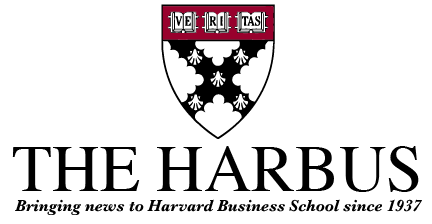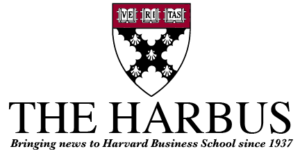All students react differently in the face of uncertainty or crisis. For one particularly talented Harvard Business School student, the current He has found cause to reevaluate his personal balance sheet and build upon his long
lost asset: Art.
Throughout History, some of the greatest masterpieces have come from the darkest days. The Sistine Chapel, arguably the most monumental piece of artwork in history, for example was commissioned by Pope Julius II, the “Terrible Pope.” The Chrystler building, at the time the tallest building in history, was completed in 1930 amidst the Great Depression.
This particularly gifted student from OD (“Artist OD”) who prefers to remain anonymous is known for his irreverent ways with acrylic, canvas and other mediums taken from daily life. Artist OD brings the canvas to life thanks to a diverse and alternative set of materials. His work is poised for success.
Markowitz May not have planned for an “Art” application of his portfolio diversification theory- but leave it to Artist OD to adapt his classroom learnings to the age-old problem of creating depth with a two-dimensional canvas; a task that Tintoretto struggled with and Duchamps finally gave in to. Using the creative eccentric, he manages to eliminate all idiosyncratic risk of platitude or shallow work, while containing the art in a frame-able piece.
His latest multimedia montage “The hopeful 30” (2009) can be found in a Cambridge gallery. The piece is reminiscent of Jasper Johns’ aggressive freedom of expression depicted in “White Flag” (1955), in which Johns includes “cut or torn pieces of newsprint, other papers, and bits of fabric”. Similarly, Artist OD manages to incorporate WSJ headlines and torn pieces of cloth (t-shirt cotton) into his work.
But it is his use of acrylics and not encaustic to keep the artifacts attached to the canvas which show his talent and his place alongside the masters. The dramatic effect is both literal and figurative. The color is ubiquitous, like the uncertainty pervading the present economy.
To add to the avant-garde flourish, the backdrop has a faint pink-ish feel to it. When asked why, the artist confessed to have muted his primary colors with a cocktail of red wines as yet another symbol of the current economic landscape and the festive times that have gone by.
“Not depressing at all!” retorted Artist OD to a comment on the gloom, “the message is that good times can be had, the wine can and will flow even though things are now more challenging, people might lose their shirts, the headlines are dismal- but above all- there is hope, there are good times to be had and even in the worst situation, you can get a friend to lend you a t-shirt…”
Like Chagall’s work, this is not an escape of realities, but a whirlwind of emotions: the viewer in turn feels traumatized, ruined yet relieved as somehow there is a sense of hope that the waters will calm and volatility, though important, is just one of many inputs in the model.

